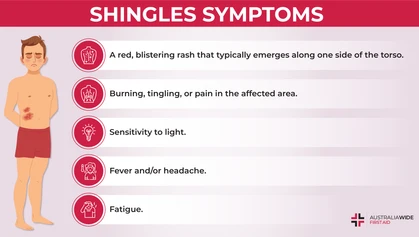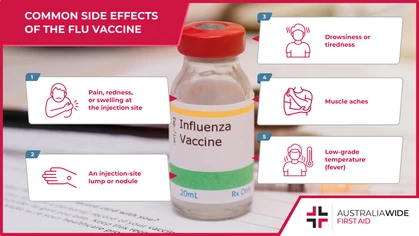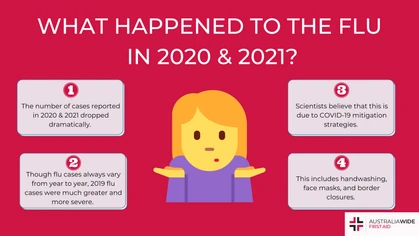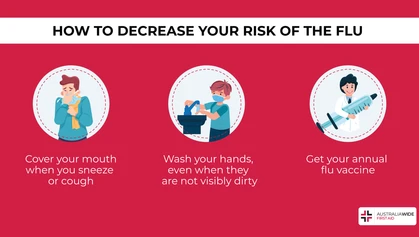Is it a Cold or Flu?

Virus
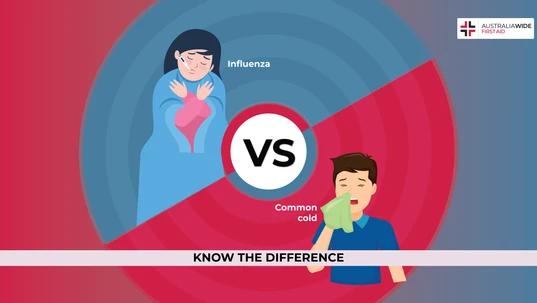
Both the flu and the common cold are contagious illnesses that affect the upper respiratory tract. However, they present in different ways, and they can result in different health complications. As such, it is important to understand their distinctions.
Though you can catch the flu at any time, it is generally agreed that flu season descends upon Australia during the colder months of the year, from April to October. The severity of flu season can vary from one year to the next. So far, this year’s flu season is proving to be a formidable one, to the extent that free flu vaccination campaigns are being rolled out across the country. Though the flu is on a veritable rampage, it is important to remember that many other viral infections are skulking around the community. The flu shares many symptoms with the common cold, another respiratory illness that can cause its own host of health complications. We are going to look at 5 key differences between the flu and the common cold. That way, you will know which treatments to adopt for a swift recovery.Causes
Both influenza (flu) and the common cold are contagious respiratory illnesses. However, they are caused by different viruses. The flu is only caused by influenza viruses, of which there are 4 types: A, B, C, and D. According to the Centres for Disease Control and Prevention (CDC), influenza A and B viruses are the main drivers of flu season. Influenza C viruses, meanwhile, are generally mild, and they are not thought to cause human epidemics. Likewise, influenza D viruses primarily affect cattle. The common cold can be caused by a variety of different viruses, such as rhinoviruses, parainfluenza, and seasonal coronaviruses. Seasonal coronaviruses are not the same as SARS-COV-2, the virus that causes COVID-19. According to Dr Clayton Cowl, a physician who specialises in the respiratory system, the virus that causes COVID-19 is novel because it started with an animal population and can spread between humans at a faster rate.Transmission
Both influenza viruses and the common cold are spread when an infected person coughs, sneezes, or talks, and releases moisture droplets into the air. You can become infected by:- Coming into direct contact with these droplets.
- Breathing in these droplets.
- Touching a surface that has been contaminated with these droplets, and then touching your mouth, eyes, or nose.

The flu and the common cold share many similarities. They are both contagious illnesses that impact the respiratory system. Likewise, they can both be transmitted by moisture droplets. However, some of their key symptoms are different.
Severity
According to the CDC, the flu is generally worse than the common cold, as symptoms begin more abruptly and are more intense. Per Australia’s Department of Health, symptoms of the flu include:- Runny nose or sneezing.
- Cough or sore throat.
- Fever and chills.
- Headache.
- Body aches.
- Vomiting and diarrhoea (more common in children).
Health Complications
The flu is more likely than the common cold to cause serious complications. Though most people recover from the flu within a week, serious complications can occur in certain high-risk groups, including:- Pregnant women.
- People aged over 65.
- Aboriginal and Torres Strait Islander people.
- Children under 5 years.
- People with chronic medical conditions, such as asthma.
Recovery
There is no known cure for the flu nor the common cold, though you can reduce your risk of becoming infected by maintaining good hygiene practices. You can also protect yourself against the flu by getting vaccinated. Likewise, though the common cold and mild cases of the flu tend to resolve themselves without any treatment, you can relieve symptoms by:- Resting.
- Drinking plenty of fluids, particularly water.
- Taking paracetamol to reduce pain and fever (as directed on the packet unless your doctor says otherwise).
- Using nasal drops or spray to ease a blocked nose.
Conclusion
As you navigate this year’s flu season, it is important to remember that the flu shares many symptoms with the common cold. Knowing the key differences between these two viral infections can help you adopt more effective treatments and make a faster recovery. There is no known cure for the flu nor the common cold, but symptoms can be eased using supportive measures. Take a first aid course to learn how to effectively prevent, identify, and manage symptoms of the flu and the common cold.
Originally published at
https://www.australiawidefirstaid.com.au/resources/cold-or-flu
as part of the Australia Wide First Aid Articles Library
